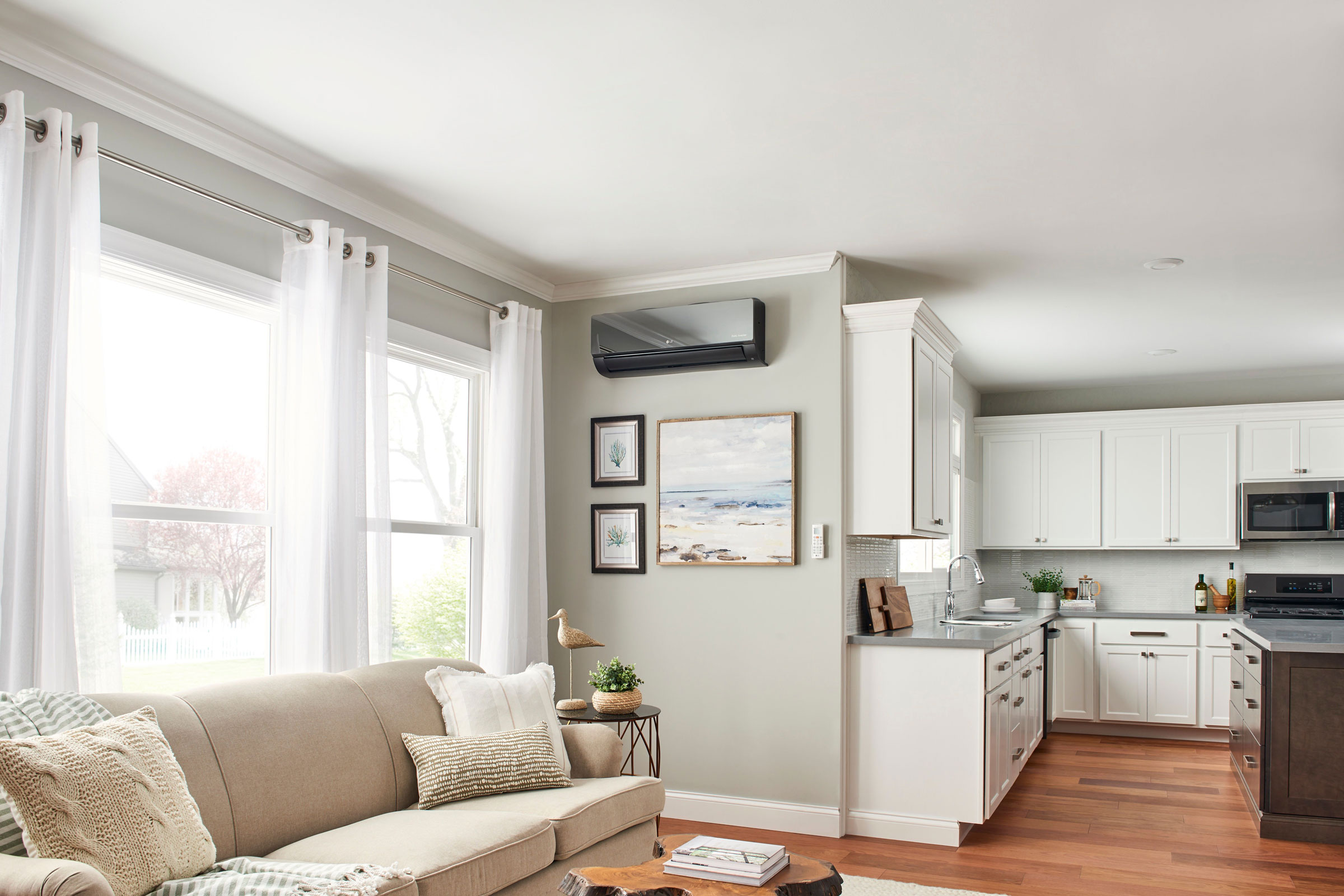Story at a glance:
- The 2023 AHR expo showcased the latest in HVAC—including rapid electrification.
- The HVAC industry is moving toward use of refrigerants with less negative impact on the environment.
- Hybridization is becoming more common as companies are taking what works best across products to make new solutions.
This year’s AHR Expo brought together HVACR industry titans, thought leaders, and innovators for the second year in a row since Covid. In-person networking, live interviews and panels, and product spotlights were some of the highlights as manufacturers, engineers, suppliers, and more gathered to explore the latest solutions in the world of HVAC. This year’s three-day event took place in Atlanta on Feb. 6 to 8.
LG Electronics continues to be one of AHR’s top exhibitors. We recently caught up with Doug Bougher, director of Applied Sales at LG Electronics USA’s Air Conditioning Technologies division, to explore the expo’s top trends and innovations and how electrification is making for a greener, cleaner HVACR industry.
What were some of the top trends at AHR 2023?
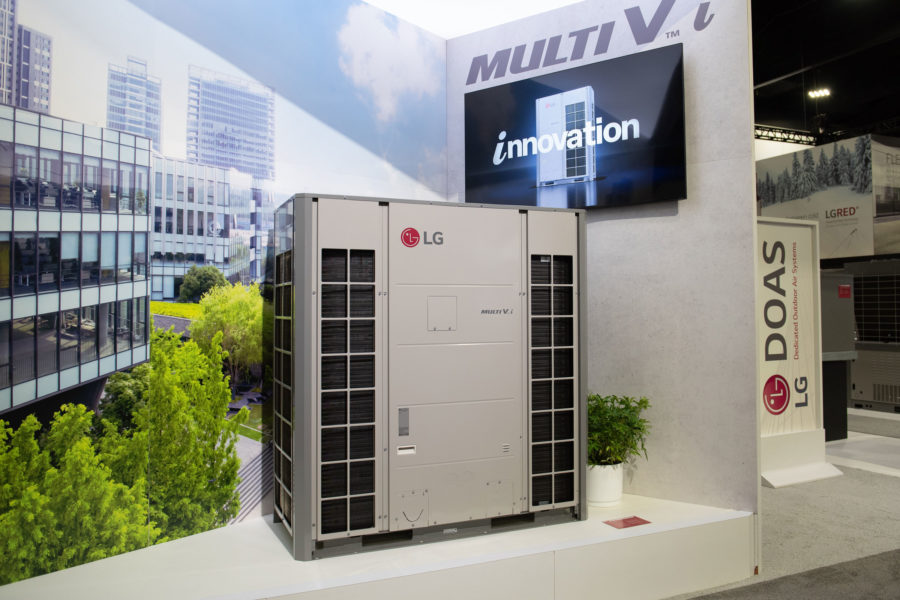
Photo courtesy of LG Electronics
There are three trends shaping the HVAC industry right now: electrification, the change in refrigerants toward those with less negative impact on the environment, and hybridization.
Electrification includes the movement away from fossil fuels usage to run HVAC systems—especially on the heat side. You’re seeing this movement reflected in more states’ laws. LG is very strongly positioned with respect to that because we sell heat pumps, which are fully electric.
The second is the change in the refrigerant codes; the industry is moving toward refrigerants with lower GWP. Refrigerant, the actual liquid or gas used to heat or cool the systems—can leak or escape to the atmosphere and that can have a negative impact on the environment. Reducing those effects is important. The industry is still trying to manage the refrigerant changes that will be implemented over the next few years. The good news is that it will make our products more efficient while lowering the GWP impact on the environment as well.
The EPA recently made stipulations about moving to a lower GWP refrigerant. California adopted the California Air Resource Board (CARB) Refrigerant Management Program (RMP), and other states are following suit. CARB RMP basically curbs the use of higher GWP refrigerants. In the US you’ll see many manufacturers—Europe has already done this—switching to R-32, away from R410A as a refrigerant.
That brings me to the last trend, which I call hybridization. Basically, when you’re talking about a system, you’re talking about a specific, known thing. For example, you’re talking about a chiller product, a custom air handler system, a rooftop unit, or VRF—something that is a concrete concept that would pop into your mind. Those definitions are starting to blur. People are taking the best piece of each system out there and putting them together.
That’s why variable refrigerant flow (VRF) technology has gotten a good deal of traction. You have highly efficient variable compressors that have been incorporated into many systems. Using, say, our outdoor unit with a custom air handler, we apply that VRF technology into a chiller, for example—and it incorporates both refrigerant and water into a VRF system. No longer are engineers or design-build contractors limiting themselves to a system of the past. They’re mixing and matching to make the best system for efficiency, comfort, and control.
What are the most pressing challenges around climate change?
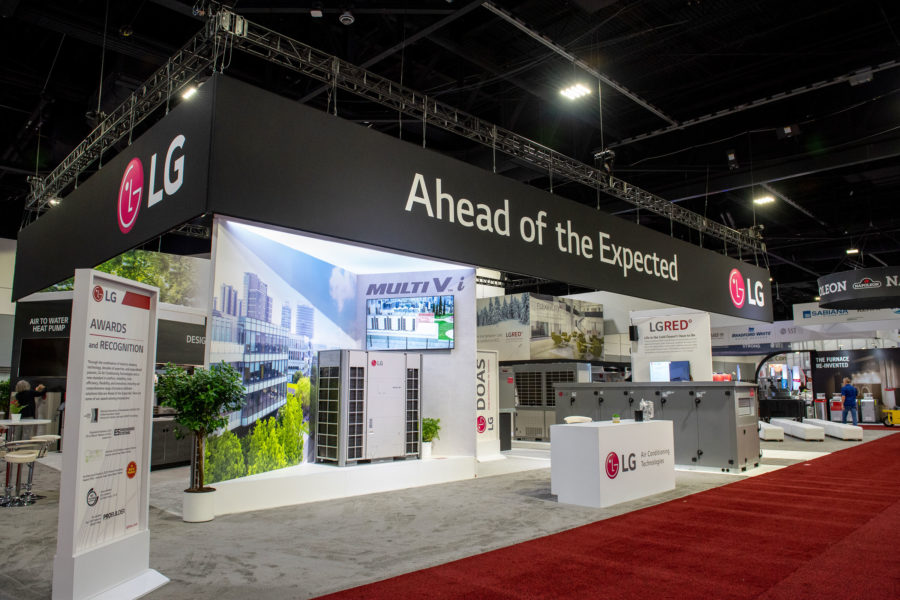
Photo courtesy of LG Electronics
The first is economic. There’s technology that exists, like heat pumps, that are more beneficial for the environment when compared to more traditional products. In many cases they are more expensive. Getting the economics to the point where someone is willing to buy something more expensive for the industry and for the environment is not always easy. You do have some of the code changes, which is forcing that change. But then you also have the Inflation Reduction Act (IRA) that earmarks a good deal of funds toward moving technology in that direction as well. So not only are they saying in the future you’re not going to be able to do this, but they’re also saying if you start incorporating heat pump technology more, we’re going to help you out with some funding.
The DOE put out a study a couple years ago that offered some alternatives to fossil-fuel based HVACR technologies. If you are using a cooling tower and a boiler and a water source heat pump, for example, potentially put a chiller in place of that. Where you’re using a furnace, replace it with a heat pump.
The other big challenge is more technological. A heat pump works great in most of the country most of the time. For heating there typically isn’t a problem, but there can be in extremely cold temperatures, minus 40 degrees Celsius or Fahrenheit (e.g. Winnipeg). A heat pump works by taking the heat out of ambient air, and it becomes harder to do this efficiently in really cold temperatures.
Fossil fuel doesn’t depend on the ambient temperature; it provides the same amount of BTUs regardless. As you get to really cold temperatures, there’s a technological challenge. Many of us have gotten very close, but we haven’t overcome it yet. The great news is that most heat pumps can be used in dual fuel applications and can go to -20 degrees Fahrenheit. For most of the US that is pretty cold. But there’s that last 1% we need to be able to cover over time.
What was the focus of LG’s offerings at AHR this year?
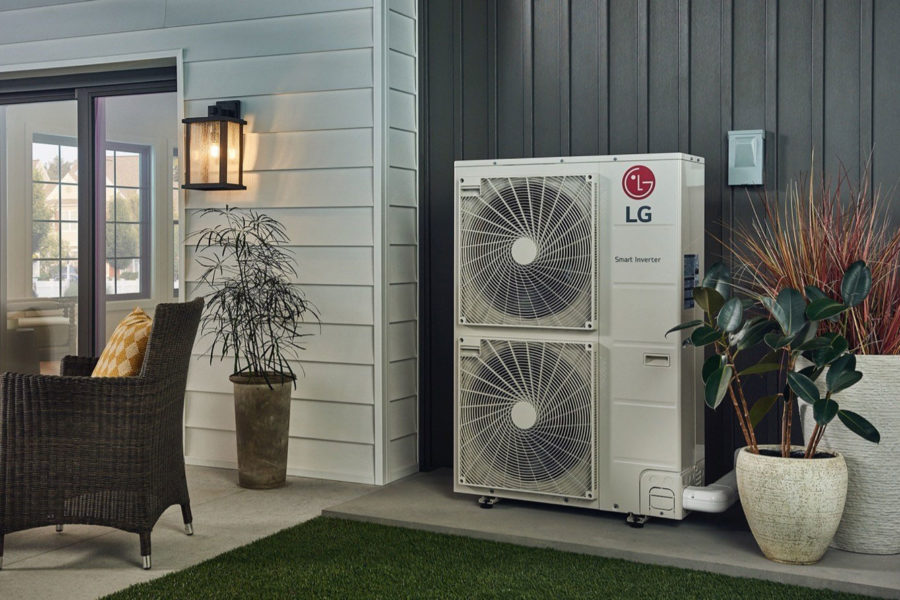
Photo courtesy of LG Electronics USA
Electrification and hybridization specifically. We recently announced a new chiller offering that is starting to take hold. It incorporates the technology of an inverter scroll chiller and the heart of a VRF system into a traditional chiller system that is a heat pump chiller—it cools and heats. It does this in a variable way that can optimize its efficiency, minimize its sound, and reduce its footprint.
We also have a high-tech Hydro Kit that’s taking a receiving refrigerant, and instead of heating or cooling the air, it heats or cools the water. Now you have a VRF system that could be used like a chiller by going into more hydronic systems within the home. You could use it to cool or heat flooring, you could use it to heat a driveway, and you could even use it for domestic hot water.
The other product we are coming out with on the residential side is a household hot water pump that replaces boilers with something that doesn’t rely on fossil fuels but has a heat pump on it. It incorporates an inverter-related heat pump on a traditional water heater.
It’s very exciting how many products we’re coming out with this year. All are aligned with efficiency, comfort, and control given the need for electrification and housing.
How does electrification help reduce carbon emissions?
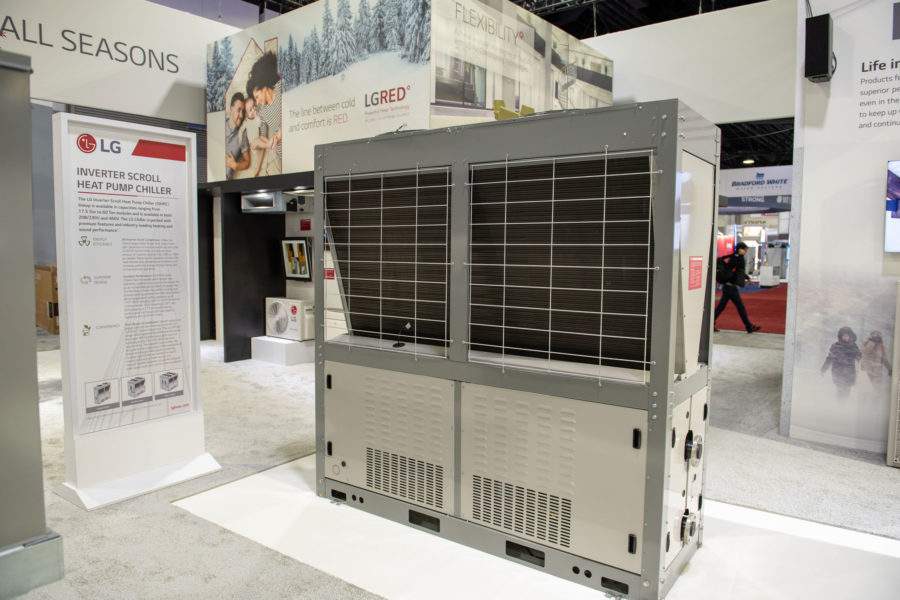
Photo courtesy of LG Electronics
Electrification is basically turning off something that uses fossil fuels. If your electricity production uses less fossil fuels than what you started with, you are reducing relative carbon emissions. LG has moved away from depending primarily on fossil fuels.
As you get more into electric-type systems, your ability to control its variability, your ability to optimize it and to get the exact comfort that you want, improves. Instead of having a furnace in your house turning on and off, it’s constantly giving you the exact amount of heat that you want. You might not even notice it’s working.
With fossil fuels you get what you get. It’s going to apply a flamethrower even if you need just a tiny bit of heat. Getting the temperature to right where you want it is tough when you’ve got a system that is either on or off. That can’t dial in the way a heat pump would.
How is sustainability part of your overall mission?
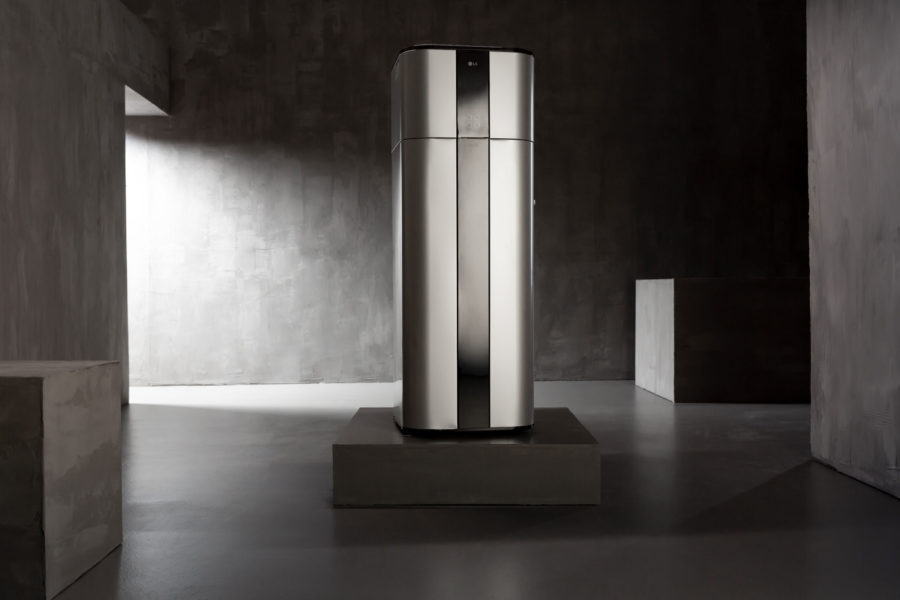
Inverter heat pump water heater. Photo courtesy of LG Electronics USA
LG Electronics’ climate action efforts focus on reducing the environmental impact of products throughout their entire life cycle—from design and production to packaging and transportation to use and disposal—while cutting greenhouse gas emissions from LG operations worldwide.
LG is working toward carbon neutrality by cutting emissions from operations through measures like highly efficient buildings, renewable energy, fleet electrification, and carbon offset projects. As the company pursues its goal for 100% renewable energy in worldwide operations by 2050, LG USA is leading the charge—meeting this goal in the United States in 2022.
We have been working toward building the home of the future with our approach and products. Luckily there is such alignment with the technology that LG brings.
Specific to our LG Air Conditioning Technologies division, electrification is where the industry is headed, and LG is leading this movement through our air conditioning technologies products and offerings.
Electrification is exciting in that it is driving us away from fossil fuels to cleaner heating and cooling technologies like heat pumps. You see heat pump technology continue to gain share of the overall HVAC market. VRF is well positioned to take advantage of this.
The HVACR industry is still strong, and we see it continuing to be strong as residential and commercial markets alike are continuously looking for more efficient and environmentally friendly ways to stay comfortable.

